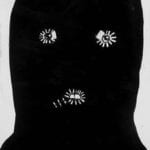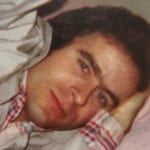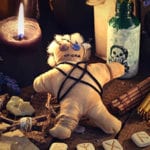 Technology
Technology  Technology
Technology  Humans
Humans 10 Everyday Human Behaviors That Are Actually Survival Instincts
 Animals
Animals 10 Animals That Humiliated and Harmed Historical Leaders
 History
History 10 Most Influential Protests in Modern History
 Creepy
Creepy 10 More Representations of Death from Myth, Legend, and Folktale
 Technology
Technology 10 Scientific Breakthroughs of 2025 That’ll Change Everything
 Our World
Our World 10 Ways Icelandic Culture Makes Other Countries Look Boring
 Misconceptions
Misconceptions 10 Common Misconceptions About the Victorian Era
 Mysteries
Mysteries 10 Strange Unexplained Mysteries of 2025
 Miscellaneous
Miscellaneous 10 of History’s Most Bell-Ringing Finishing Moves
 Technology
Technology Top 10 Everyday Tech Buzzwords That Hide a Darker Past
 Humans
Humans 10 Everyday Human Behaviors That Are Actually Survival Instincts
 Animals
Animals 10 Animals That Humiliated and Harmed Historical Leaders
Who's Behind Listverse?

Jamie Frater
Head Editor
Jamie founded Listverse due to an insatiable desire to share fascinating, obscure, and bizarre facts. He has been a guest speaker on numerous national radio and television stations and is a five time published author.
More About Us History
History 10 Most Influential Protests in Modern History
 Creepy
Creepy 10 More Representations of Death from Myth, Legend, and Folktale
 Technology
Technology 10 Scientific Breakthroughs of 2025 That’ll Change Everything
 Our World
Our World 10 Ways Icelandic Culture Makes Other Countries Look Boring
 Misconceptions
Misconceptions 10 Common Misconceptions About the Victorian Era
 Mysteries
Mysteries 10 Strange Unexplained Mysteries of 2025
 Miscellaneous
Miscellaneous 10 of History’s Most Bell-Ringing Finishing Moves
10 Chilling Facts About The Alligator Man
During the Great Depression, South Texas had its very own Bluebeard. Like the titular character in the French fairy tale, Joseph Douglas “Joe” Ball hacked up his lovers before disposing of their body parts in the sands and swamps of Bexar County. History has come to know the tall, lanky, and hard-bitten Ball as the “Alligator Man”—a heartless and cruel killer who fed his victims to his pet alligators.
While these rumors are just that, rumors, the other facts of Ball’s horrific crimes need no exaggeration. Beginning sometime during the mid-1920s, Ball’s life of crime consumed and damaged lives while making Ball rich and infamous.
10 A Dark Heritage
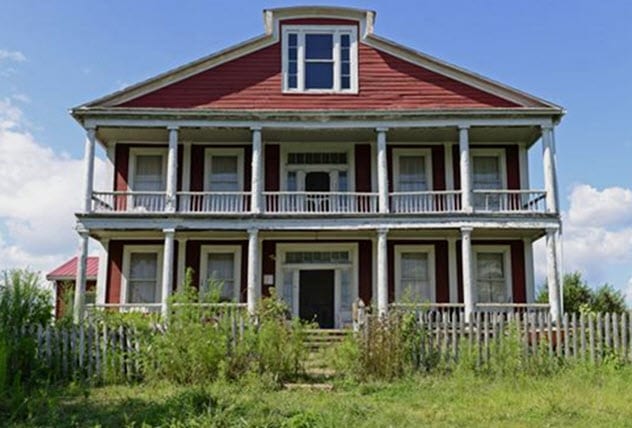
Long before Joe Ball came into this world, a more superstitious mind would say that he had been cursed simply because of his lineage. More to the point, Ball was the great-great-grandson of John Hart Crenshaw, one of the Land of Lincoln’s most notorious citizens.
Born on the border between North and South Carolina, Crenshaw came from an old American family that had moved west from their native soil in Dixie. After young John’s birth in 1797, the Hart family relocated to New Madrid, Missouri. Following an earthquake in 1811, they finally settled in the wilds of Saline County, Illinois.
At age 18, John was the sole breadwinner in the house and he worked grueling days at a salt refinery in Half Moon Lick, Illinois. In 1829, John struck gold (or rather salt) when the administration of Governor Ninian Edwards decided to sell off the territory’s salt lands to private owners and operators.
John Crenshaw was one of those who benefited. While still a young man, Crenshaw owned several acres of salt land plus one sawmill and at least three salt furnaces.
History does remember Crenshaw’s industriousness. Rather, Crenshaw is remembered today as one of Illinois’s worst slavers. The traditional tales of Southern Illinois say that Crenshaw frequently kidnapped free blacks and escaped slaves and forced them to work at his mines. Crenshaw’s supply of illegal labor came courtesy of a private army of “night riders” who roamed the Ohio River looking for slaves.
Although slavery was technically illegal in the Illinois Territory, Crenshaw and others operated a black market whereby slaves and free blacks were bought, sold, and traded with the South. State authorities tried to prosecute Crenshaw for his crimes at least twice, but the owner of the Hickory Hill estate got off both times.
Today, Crenshaw’s house, nicknamed the Old Slave House, is reportedly haunted. Ironically, one can find the Old Slave House in the small town of Equality, Illinois.[1]
9 War Veteran And Bootlegger
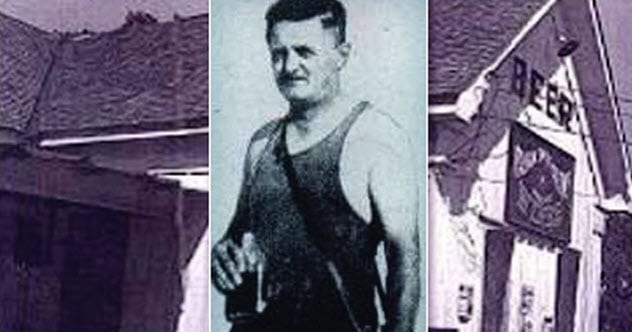
Before becoming a murderer, Joe Ball was just another young man in the bustling town of Elmendorf, which lies some 24 kilometers (15 mi) southeast of San Antonio. Ball’s family was local nobility, with his father Frank X. Ball being the man who had used a cotton gin, a railroad depot, and a factory to turn Elmendorf into something worthwhile. Joe’s younger brother Raymond would become the town’s first mayor following its incorporation in 1963.
Joe had few of the social graces of his brothers. He didn’t have his father’s political acumen, either. Rather, Joe was initially just a follower. Before 1917, Joe worked at a mid-level job at his father’s cotton mill.[2]
When the US went to war, Joe joined up. Joe Ball saw action on the Western Front in France during World War I. Not too much is known about Ball’s two-year service, but most who remember him say that Joe was “different” after coming home to Texas in 1919.
Back in Elmendorf, Joe opened a small saloon that he dubbed the Sociable Inn. Here, Ball sold illegal beer and liquor to thirsty customers trying to evade Prohibition. According to one eyewitness named Lawrence Liedecke, Ball also drove around Bexar County with a 190-liter (50 gal) barrel of whiskey. He was helped in all his endeavors by Clifton Wheeler, a young black man whom others said lived in mortal fear of his employer.
8 Frightening Attraction
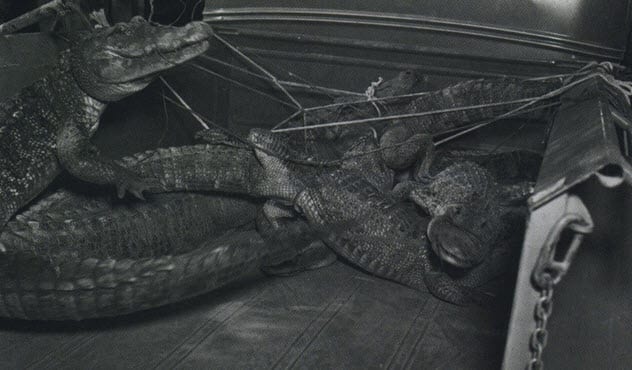
To draw more patrons to the Sociable Inn, Joe dug a pit behind his bar and filled it with water and alligators. At that time and in that part of Texas, it wasn’t hard to find live alligators. Every Saturday night, the Sociable Inn became an orgy of violence, with Joe and other patrons feeding live animals to his hungry gators.
These big, bad gators may have dined on stray cats, dogs, possums, and pretty much every other kind of critter known to haunt South Texas. Patrons were encouraged to join in on the fun, while Ball’s female bartenders and waitresses plied them with cheap booze.
Ball’s women were just as much of an attraction as the alligators. Ball was known as a bit of a redneck Lothario despite being physically unattractive. During the Depression, many young women found work at Ball’s bar before moving on to better gigs in cities like Houston and Dallas.
It wasn’t uncommon for pretty young things to work one day and then disappear the next. Many people lived vagabond lifestyles during those lean years. However, it was the frequency of these disappearances from the Sociable Inn that began to cause gossip.[3]
7 The Investigation

By all accounts, Hazel Brown was one of the best-looking “dime-a-dance” girls to ever work at the Sociable Inn. Brown, nicknamed “Schatzie,” was a 23-year-old taxi dancer who worked for a few weeks at Ball’s place in 1937 as a hostess. The native of McDade, Texas, fell under her boss’s spell, which ultimately led to her doom.
Ball would readily admit that he was a sucker for women. Prior to Schatzie, Ball had dated and even married other employees, including a crude woman named Big Minnie Gotthardt and a barmaid named Dolores “Buddy” Goodwin. Goodwin wound up with a facial scar from Joe after the “Alligator Man” hit her in the face with a beer bottle. Both women would soon go missing. Another one of Ball’s wives, known only as Nell, likewise went away without leaving a trace.
As for Hazel, Bexar County cops only found out about her when they were looking for ex-wife Dolores. During the hunt, an unnamed Mexican-American man told Bexar County deputy sheriff John Gray that Ball had left a rotten-smelling barrel out behind his sister’s barn.
The barrel could not be found, but deputies Gray and John Klevenhagen (the latter a future Texas Ranger) corroborated the man’s story after talking with Ball’s sister. When the deputies went back to the Sociable Inn, Ball got himself a beer while simultaneously pulling a .45-caliber pistol from underneath the counter.
On that day, September 23, 1938, Ball pointed the gun at his heart and pulled the trigger.[4]
6 The Murder Of Big Minnie
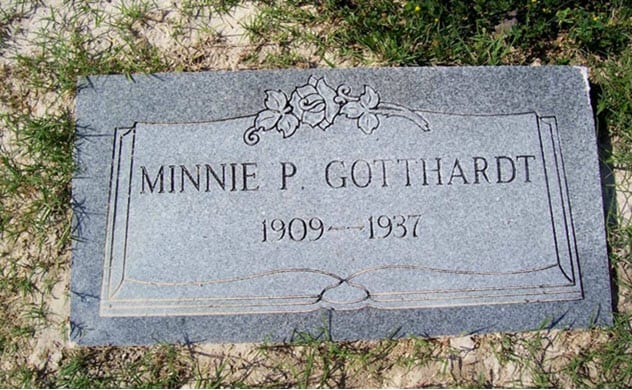
Following Ball’s suicide, police began learning a lot more about the fearsome bar owner. For instance, they discovered that his relationship with Big Minnie had begun back in 1934 and had ended in 1937 when Ball began covertly seeing another barmaid. In summer 1937, not too long after Ball began sleeping with Schatzie, Big Minnie went missing.
Ball explained away Minnie’s disappearance by telling everyone that she had run off to Corpus Christi to give birth to a mixed-race child. Ball hoped that this excuse would keep people from asking too many questions, especially since Minnie had left all her clothes behind at the bar.
The investigation into Big Minnie’s disappearance broke when old friend Clifton Wheeler told police that Ball had admitted to killing Big Minnie following a dispute. Specifically, Big Minnie was pregnant with Joe’s child and Joe did not want her to have the baby.[5]
So, in June 1937, Minnie, Joe, and Wheeler went to the beach in Ingleside. There, Ball supposedly shot a nude Minnie in the temple before burying her body in the hot sand. Police found Minnie’s well-preserved corpse a year later.
5 The Murder Of Hazel Brown
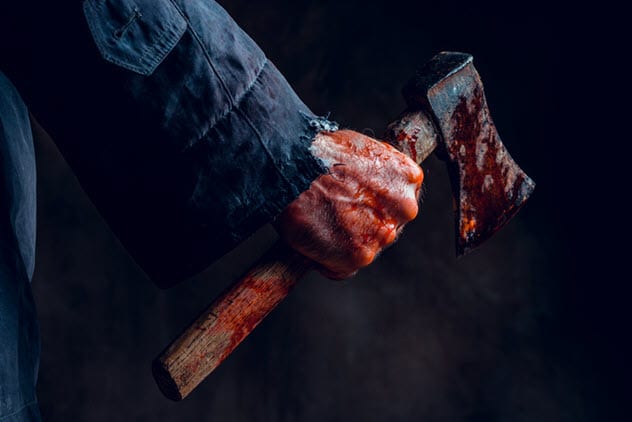
Wheeler’s cooperation with the Bexar County sheriff’s deputies also led them to uncover Hazel “Schatzie” Brown’s remains. It was Schatzie’s body that Ball had stashed away in the foul-smelling oil drum.
Wheeler told the investigators that Ball had killed Schatzie with an axe before later using a rusty saw to dismember her body. After first telling the police that Schatzie’s body had been thrown into the San Antonio River, Wheeler later took the homicide investigators to the young woman’s makeshift grave.
The gruesome discovery revealed that “Alligator Joe” had tried to disguise Schatzie’s body by first placing her clothes on top of her body and then setting those clothes on fire. As to why Schatzie had been killed in the first place, the motive was twofold: First, Ball had told Schatzie all about his killing of Big Minnie. Second, Schatzie was planning on leaving Ball for another man.[6]
Enraged, Ball decided to end the short and unhappy life of Schatzie, a woman who had given birth at age 15, had a shotgun wedding with the father that same year (the father was 14 years older and Schatzie’s cousin), and later divorced the man before turning 21.
4 The Disappearance Of Julia Turner
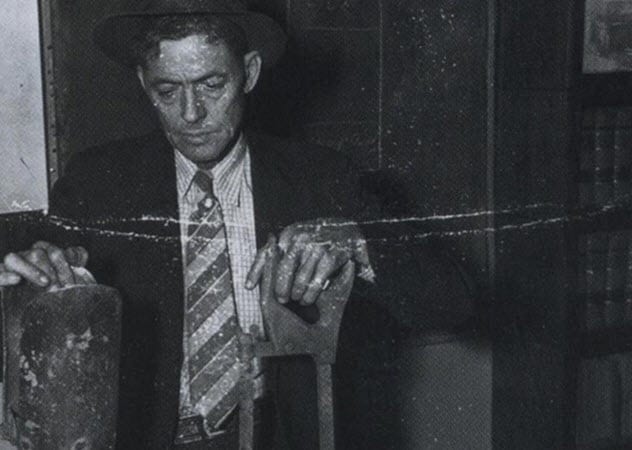
When police combed through the Sociable Inn following Ball’s suicide, they discovered several salacious letters that had been exchanged between Joe and his many employees/paramours. One of Ball’s possible victims, 23-year-old Julia Turner, had left the bar after a fight with another one of Ball’s lovers.
Both women—Turner and the unnamed lover—vanished sometime in 1937. Upon further inspection, sheriff’s deputies learned that Turner had left all her clothes behind at the Sociable Inn, while another unnamed woman had opened a bank account in Elmendorf just days before she also disappeared.
Ball had been questioned about Turner’s disappearance in September 1937, but police had bought his line about Julia’s being “anxious” to leave Elmendorf. Joe said that he had paid the woman $500 so that she could have an easy time on the road. Turner would never be found alive again.[7]
There was one missing person who did return, though. Ball’s former wife “Buddy” Goodwin was found living in San Diego. Goodwin was missing her left arm, a fact which immediately started the rumor mill grinding. In truth, Goodwin had lost her limb in a terrible car accident in January 1938.
3 The Alligator Theory
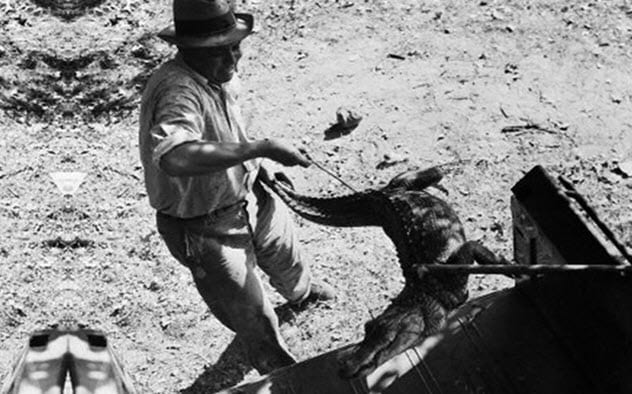
Joe Ball’s body was still warm when investigators put forth the idea that he had disposed of his victims by feeding them to his prized alligators. Such an idea was logical. After all, Joe had fed helpless animals to his alligators on countless Saturday nights. Furthermore, so many people had gone missing from the Sociable Inn without a trace that it made a kind of perverted sense that Joe’s alligators had swallowed all the evidence.
Following Ball’s suicide, Bexar County police wrangled up the alligators and sent them off to the San Antonio Zoo. The alligator pit behind the Sociable Inn was searched for clues and human remains, but the police ultimately came up empty.
To this day, there is no hard evidence that Joe Ball ever fed any human being to his alligators. That said, a neighbor came forward on the day of Ball’s suicide to say that he had seen Ball feeding what looked like human body parts to his gators two years earlier. Patrons at the Sociable Inn and residents of Elmendorf had long joked about Joe feeding his waitresses to the alligators, with many saying that the jokes had begun way back in the 1920s.[8]
2 A Bigger Body Count?
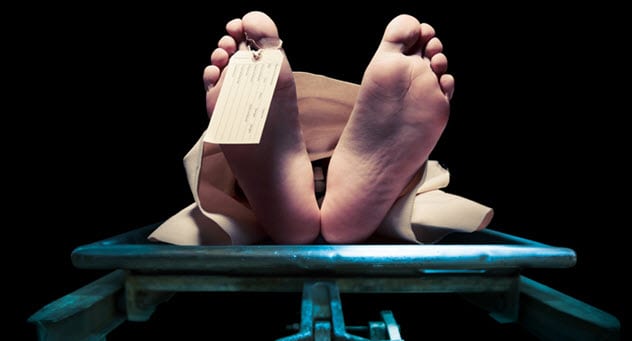
A search of the employment rolls kept at the Sociable Inn found that a dozen former employees could not be located. This fact has caused many to believe that Ball’s true body count is upward of 20. However, Dolores Goodwin told police that Joe was only responsible for two murders (Big Minnie and Schatzie).
The true number will likely never be known. The authorities in Bexar County tried to put the controversy to bed by testing the rotting meat found near the alligator pit behind the Sociable Inn. The meat came back as animal rather than human.[9]
However, investigators did find a bloody axe and pieces of human hair at the same alligator pit. It is believable that a man capable of murdering two women in cold blood could also murder 14 other women and at least one teenage boy, all of whom ran away from the Sociable Inn without a trace.
1 Texas Nightmare
It did not take long for the Joe Ball story to become folklore. In Texas, “Alligator Joe” became the subject of campfire tales. In the rest of America, popular pulp magazines and early comic books reprinted their versions of the story, adding more gore and sex depending on the audience.
One Texan inspired by the story was film director Tobe Hooper. Hooper had always taken inspiration from true crime. Indeed, he had experienced a real massacre firsthand as he was a student at the University of Texas, Austin, during Charles Whitman’s shooting rampage in 1966.
While making and finalizing his horror masterpiece, 1974’s The Texas Chainsaw Massacre, Hooper not only took inspiration from the crimes of Wisconsin necrophile Ed Gein but he was also inspired by the then-current case of Houston serial killer Dean Corll (aka the “Candy Man”).
Hooper’s second major film, 1976’s Eaten Alive, tells a sordid version of Joe Ball’s crimes. Starring Neville Brand as Judd, the psychotic proprietor of the seedy Starlight Hotel, Eaten Alive features a cast of backwoods rogues, from the prostitute Clara (played by Roberta Collins) to the sex-starved redneck Buck (played by Robert Englund, the future Freddy Krueger).
Instead of native Texas swamp gators, Judd feeds his many victims to an imported Nile crocodile. While not considered as good as The Texas Chainsaw Massacre, Eaten Alive has a cult following and is generally considered either Hooper’s second- or third-best film.[10]
Benjamin Welton is a freelance writer based in Boston
Read more chilling facts about serial killers on 10 Creepiest Letters Penned By Serial Killers and 10 Chilling Serial Killer Quotes That Show They Had No Remorse.
